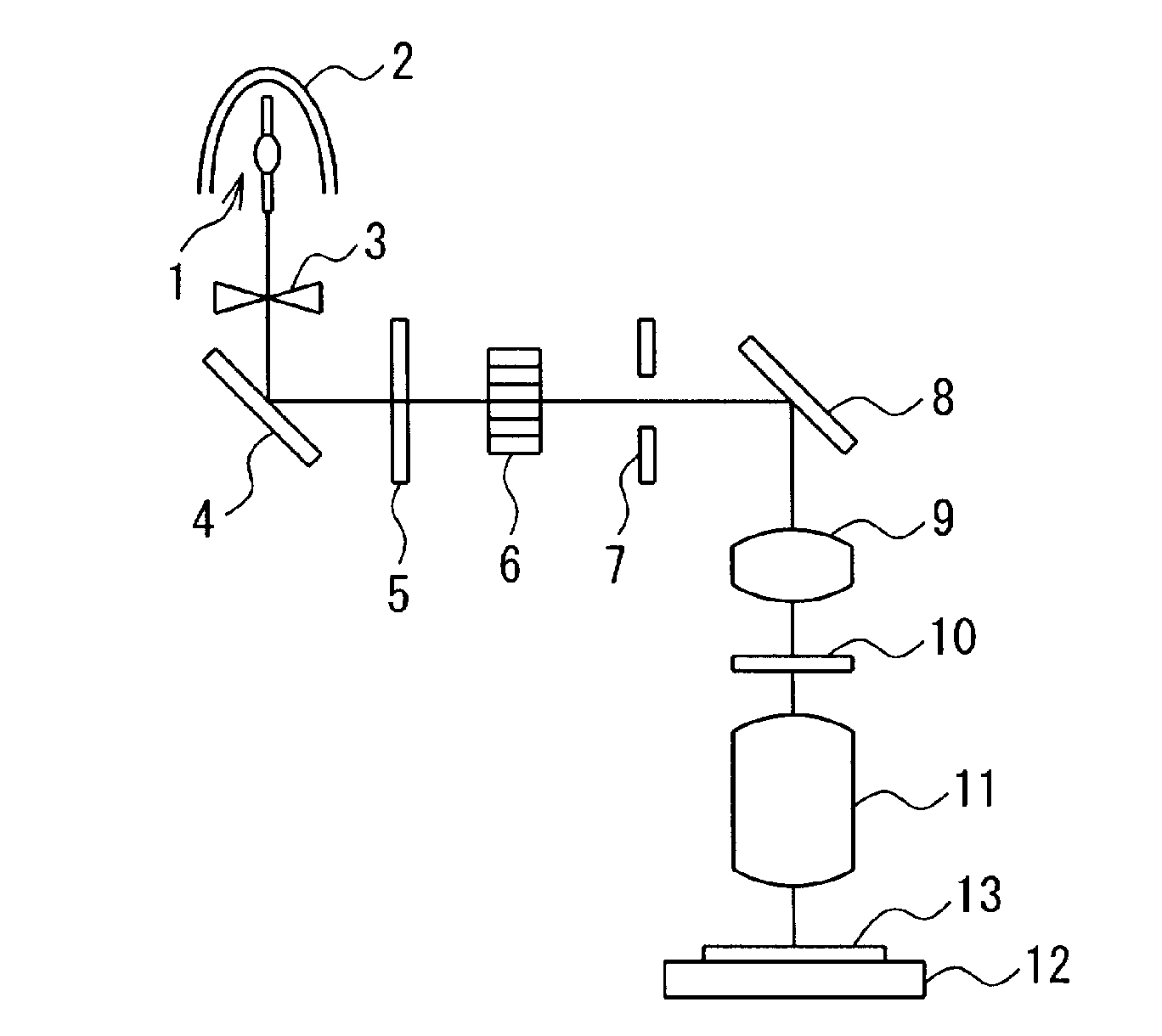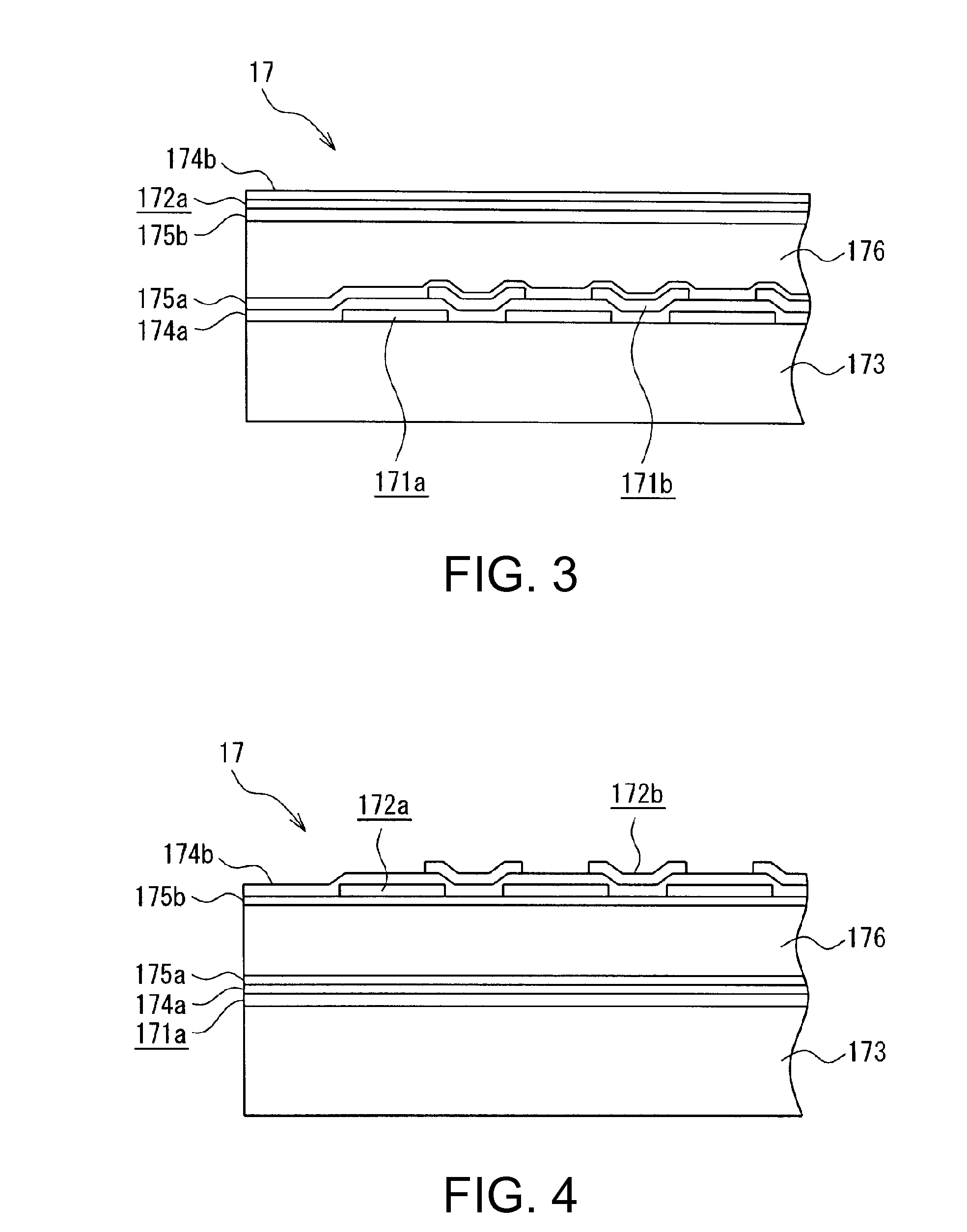Liquid crystal blind, method of manufacturing semiconductor device using the same, and reduced projection exposure apparatus
- Summary
- Abstract
- Description
- Claims
- Application Information
AI Technical Summary
Benefits of technology
Problems solved by technology
Method used
Image
Examples
first embodiment
[0050]FIG. 1 is a schematic diagram showing a basic configuration of a reduced projection exposure apparatus according to the first embodiment of the invention. Further, FIG. 2 is a plan view showing a fundamental structure of a liquid crystal blind 17 as an essential part of the reduced projection exposure apparatus with a part thereof broken.
[0051]The reduced projection exposure apparatus is provided with a mercury lamp 1 as a source of luminescence, an elliptical mirror 2 for reflecting and collecting the light emitted by the mercury lamp 1 to form irradiation light, a shutter 3 for controlling the irradiation time of the irradiation light in accordance with an open / closed state, a total reflection mirror 4 for totally reflecting the irradiation light from the shutter 3 in a lengthwise direction, an interference filter 5 for transmitting the irradiation light totally reflected by the total reflection mirror 4 to select only necessary wavelengths, a fly-eye lens 6 for transmitting...
second embodiment
[0085]In the case of the reduced projection exposure apparatus according to the first embodiment, the case in which the optical opening section of the liquid crystal blind 17 is controlled in two levels due to the action of the storage device 15 and the controller 14, thereby variably setting the shape of the irradiation area of the irradiation light is explained. In the second embodiment, the control with finer levels is performed, thereby variably setting the shape of the irradiation area.
[0086]FIGS. 8A through 8E are diagrams exemplifying the product pattern area Ep varied in accordance with the irradiation pattern on the reticle 10, on which the irradiation control by the liquid crystal blind 17 in the reduced projection exposure apparatus according to the second embodiment of the invention is conducted, wherein FIG. 8A is related to the entire area irradiation pattern, FIG. 8B is related to a first partial area irradiation pattern, FIG. 8C is related to a second partial area ir...
PUM
 Login to View More
Login to View More Abstract
Description
Claims
Application Information
 Login to View More
Login to View More - R&D
- Intellectual Property
- Life Sciences
- Materials
- Tech Scout
- Unparalleled Data Quality
- Higher Quality Content
- 60% Fewer Hallucinations
Browse by: Latest US Patents, China's latest patents, Technical Efficacy Thesaurus, Application Domain, Technology Topic, Popular Technical Reports.
© 2025 PatSnap. All rights reserved.Legal|Privacy policy|Modern Slavery Act Transparency Statement|Sitemap|About US| Contact US: help@patsnap.com



